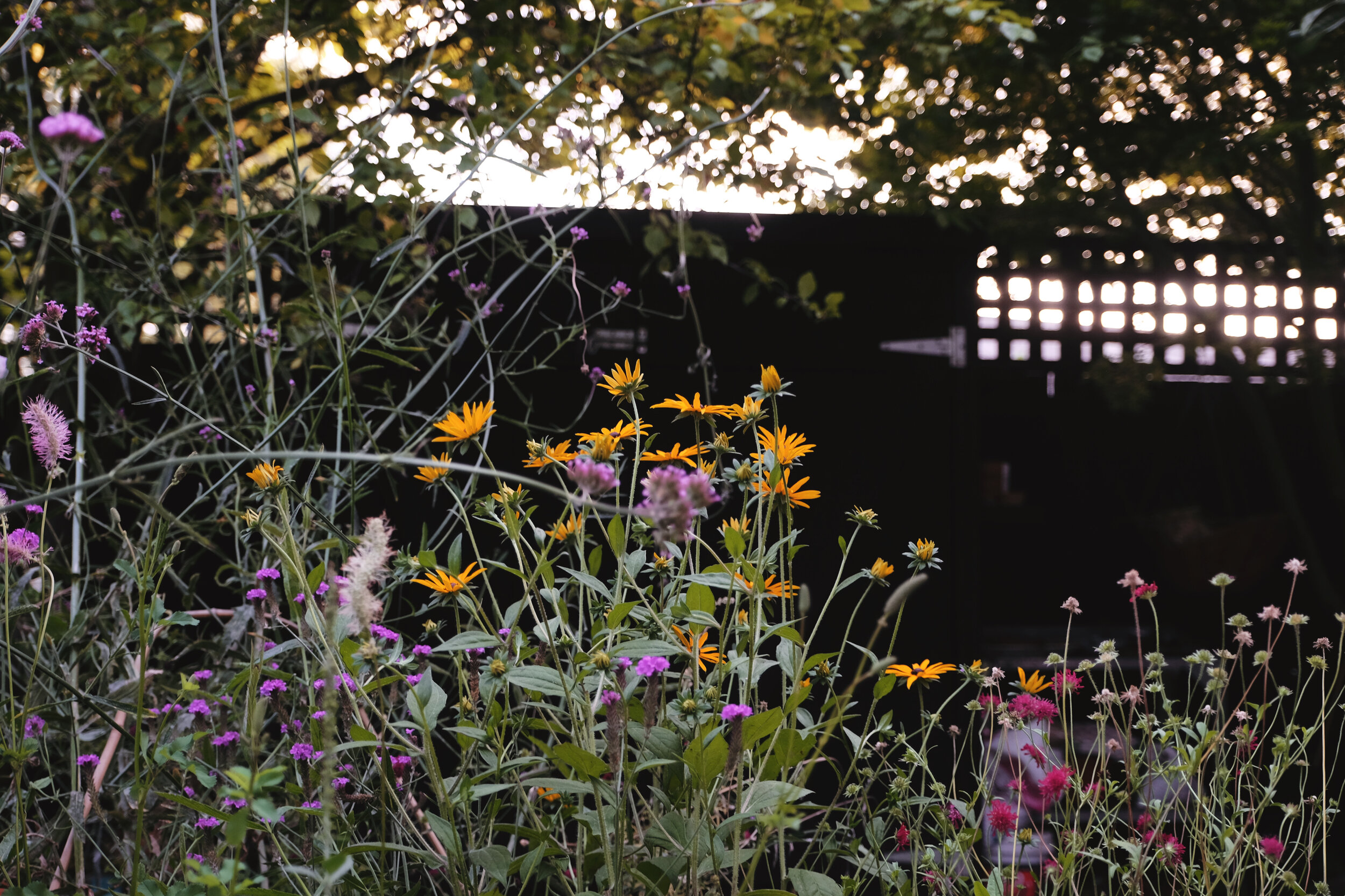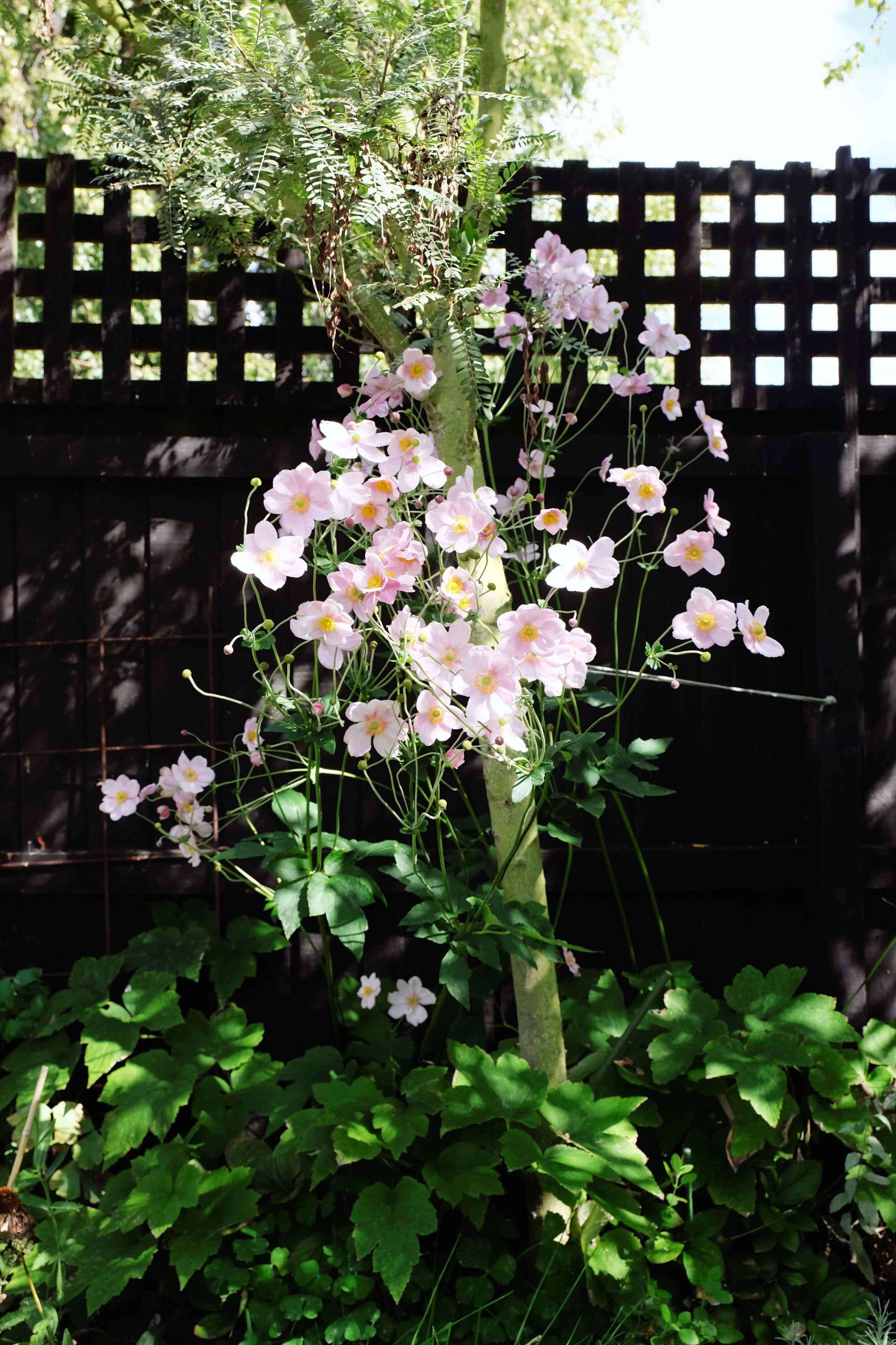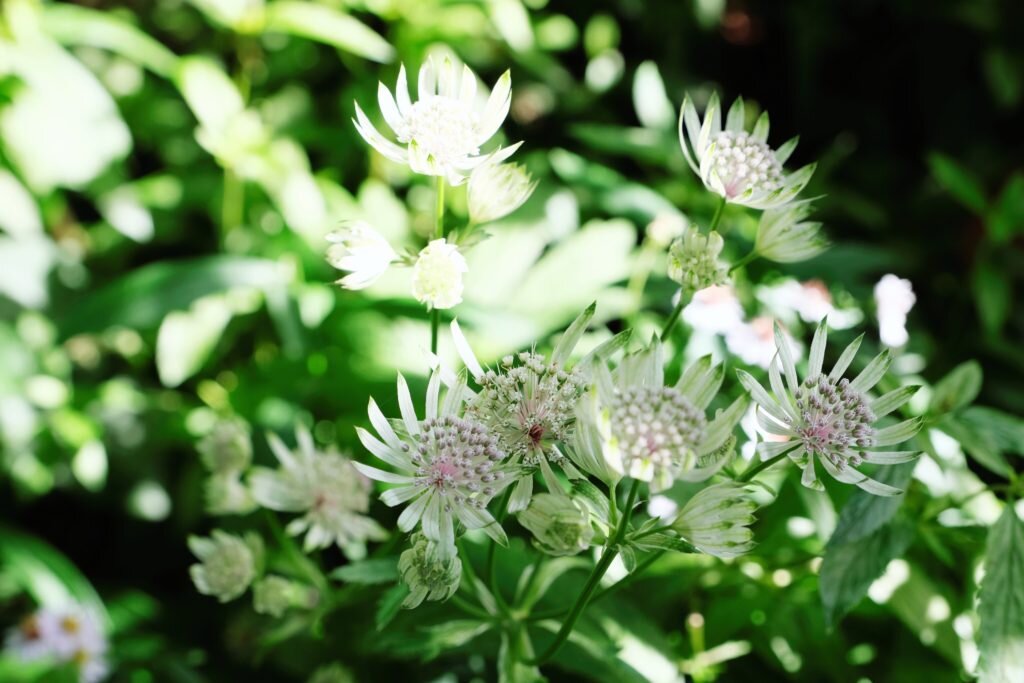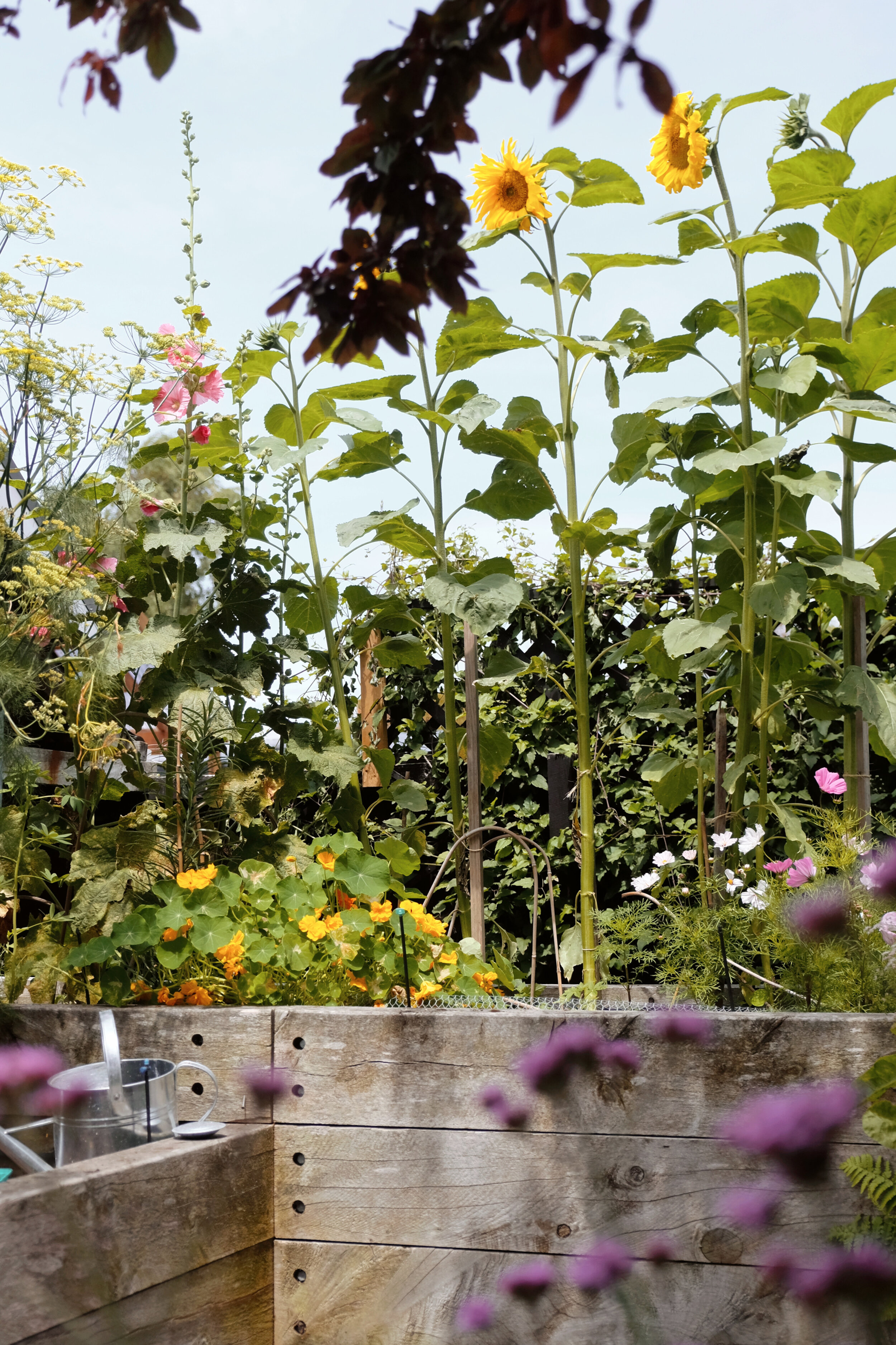Guide to plant types
/One of the first barriers I hit when dipping my toe into gardening was the "lingo".
I found that gardener's in the "know" would readily answer my questions of "what, when, how" but inadvertently create MORE blank faced confusion when using exclusive garden language in their explanations. This created brain explosions and a real barrier to my enthusiasm to even continue learning!
Now I do understand their need to use gardening terms and their huge importance to designing, learning and growing a garden that I would love. The plant categories below have unlocked my creativity and pathways to further knowledge and I hope they will keep you on track too.
I have attempted to keep the terms below as light and easy to digest as possible, mostly to help you understand how your favourite plants will behave, however .... I am sure a seasoned gardener could argue a point or two in there!
A mix of perennial plants in my garden in late summer 2020.
PERENNIALS
Plants that recede down to their roots each year, to "re-grow", flower and seed again for 2 or more years into the future.
Features of Perennials:
They are terrific "investments"! If you choose to purchase established plants, you can do so with the knowledge that they will deliver year after year AND you will be able to "divide" and create more plants to spread around your garden as their roots become more established. Even better - being gifted a division from someone else's garden!
Some will last for years and yearrrs (and may take a few to get going!) like Peonies. Some may be shorter lived and start to tire after 3 years or so.
Perennials are the ones that will need some "work". During the season deadheading of spent flowers to encourage them to keep going and at the end, post the "pretty" seed head time, they will need pruning back and "tidying" up.
My favorite Perennials in my garden:
Verbena Bonariensis, Japanese Anemones, Dahlias, Thalictrum, Knautia, Echinecea, Rudbekia, Astilbe, Delphiniums, Hydrangeas, Irises, Salvia, Eryngium, Astrantia and Hostas.
Tender Perennials
These are perennials that won't survive their dormant period in very cold climates.
These are often climates that are under snow all winter which doesn't occur all that much for us here in NZ.
For example - people in the cold parts of the Northern Hemisphere commonly "lift and store" their Dahlia tubers in Autumn and replant in the warmth of Spring. I did this my first year in total worry I would kill them BUT by all accounts, and asking around, I have left mine "in" this year with a pile of mulch on top.
Time will tell as we had some great frosts this winter!
Bulbs/Corms/Tubers/Rhizomes
Essentially perennial plants that grow from strange bulbous "storage organs" of differing types.
Some of these are hardy and some tender (as explained above and may need to be lifted before the cooler months hit).
Many of this group of perennials are also commonly your exciting late Winter, early Spring surprise before wilting away underground again! They will also be multiplying and each year or two are worth digging up post flowering to gently divide and replant our new stock elsewhere.
Common Bulbs: Daffodils (also known as Narcissus/ Jonquil family), Lillies, Tulips, Amarylis and Garlic
Common Corms: Bearded Iris, Crocuss, Gladioli, Ranunculus
Common Tubers: Dahlias, Peonies and Potatoes
Common Rhizomes: Anemones, Ginger and Bamboo
I'd advise looking up how to plant each type listed above as I definitely planted my Peony tubers upside down and had to dig up and do again!
Shrubs
These are perennial plants that are smaller than trees and have woody stems above the ground when dormant.
When they go dormant over winter they can either be evergreen, with leaves all year around like box hedging, Camellias and Rhododendrons. Or they can be deciduous, where they lose their leaves to reveal their woody stems like Hydrangeas.
Shrubs are important for flower gardens as they offer structure all year around, supporting your little landscape with visual interest when your other plants have finished for the year.
Dahlias pictured in containers on left of image, and tall loooong flowering Verbena Bonariensis to the right.
Soft pink Japanese Anemones glowing against the fence. They were grown from two small plants yanked out of the garden at a friends house. This is their size in season 2 and they will continue to spread each year. Some find this annoying but pulling out a plant in a quick tidy up seems easier to me than having a "gappy" garden for weeds to take hold.
Divine Astrantia! A saviour for me in that it loves part shade AND lasts ages in a vase as a cut flower! !
ANNUALS
Plants that grow, flower, set seed and die in a single year.
Mostly they are prolific self seeders and will re emerge as new plants in the same position.
Advantages of Annuals:
They are celebrated for their abundant colourful blooms especially in summer and instant brightening and cheering up of your outside space. I've found them to be eager, fast growers when planted in their preferred positions (eg. sun/full sun etc). Many will flower for months given good care (water, dead heading) and a position they are happy with.
Many are fantastic for use in hanging planters and pots as well planting to add interest to the edges of your garden.
You might spot many annuals being referred to at garden centres as "bedding" plants.
My favourite Annuals I plant each year or let self seed:
Cosmos, Lupins, Sunflowers, Icelandic Poppies, Sweet Peas, Zinnias, Snapdragon, Larskpur, Nigella, Petunias, Lobelia, Zinnias, Fennel and companion planted Marigolds with my vegies.
Hardy Annuals
These are annuals that can be sewn directly into the ground where you want them to grow and can tolerate cold and frosts.
Often they can be sewn in late Autumn or early Spring. Talk about low maintenance!
Hardy Annuals that I love include:
Poppies, Nigella, Zinnia's, Cornflowers and in my experience, Sweet Peas.
Half Hardy Annuals
Plants that need some more nurturing by planting in seedling containers and in shelter away from frost before transplanting into their garden position once well established.
Half Hardy Annuals I love include:
Cosmos, Lupins, Fennel
Inbetweenies..
On reading and my own discovery, some plants deemed annuals, may behave as short lived perennials depending on your climate!
For me Scabiosa seems to be perennial but for colder climates it may be an annual...the lesson here is that rules are bendy but that isn't a big deal! Icelandic Poppies nearly hang on for me at times too.
My treasured wall of sweet peas which were my "gateway" plant to growing flowers. They prefer full sun but need to be well watered. Regular deadheading will keep them going for months (and keep your home smelling sweet!) but I find I eventually lose them to powdery mildew. This year I have let many self seed and begin their growth in position over winter, I find that these plants are always the strongest compared to seedlings I start in seed trays in Springtime.
There are no happier prolific flowering plants than my favourite Cosmos! I grow a few varieties in seed trays first before transplanting and getting plants over a metre tall! Dwarf varieties are excellent for the front of your garden beds too.
A collection of Annuals from my plot - Cosmos "Sonata", Fennel Flower, White Lupin.
BIENNIALS
Unlike annuals, biennials complete their life cycle over two years. From seed they establish their roots, stems and leaves in the first year, with the second season being their flowering, setting of seed then dying.
Advantages of Biennials:
Not as many as the others BUT probably just the nature of the great plants that ARE biennial and would visually enrich your garden. Once you get them in a self seeding cycle they'll be there every year and it will seem as though they are flowering annuals with no cost!
My favourite biennials in the garden:
Foxgloves (although now many are annual), Hollyhocks, Queen Anne's Lace
Gorgeous towering Hollyhocks tucked between Fennel and Sunflowers in vege garden.
It's been firm belief, held since childhood, that fairies live in Foxgloves - hence the thrill have having them in my garden.
Queen Anne's Lace - so gorgeous and ethereal amongst other plants. Be sure to buy your first plants from a garden centre or seeds from someones garden and don't be tempted to swipe look a likes from the road side. It is difficult to separate them from the very poisonous, wild growing Hemlock.
Why is it helpful to understand these terms?
Once you understand to identify each plant you love as existing in one of these categories, you suddenly are able to plan you garden, understanding your investment in plants and what will return each year.
This is also really helpful if you have inherited a garden. Wait a full year to see what "pops up" over the seasons to understand what you are working with and where plants are hiding.
I readily move my perennials around to find them better positions for them to perform, but also divide their "clumps" as they grow to gain more plants or share with others. I keep a subtle notebook and brain record of where they are (as invisible during winter) which allows me to ALSO make sure I leave space to experiment with fun vibrant annuals each year.
Understanding the slow going process of biennials means I don't rush to pluck out a green but un-flowering plant in confusion, now knowing it will deliver me flowers the following year.
SO many people have shied away from perennials in the past, deeming them "too much work", but I simply could NOT imagine being fulfilled with my outside space without the excitement of watching them arrive in bloom and cutting them for vases in my home. I feel like the "maintenance" warnings have far outweighed the actual pruning back and cleaning up required and for me, I've found this a nice process to be involved in. Losing yourself wandering around the garden dead heading spent flowers, or chopping back tired plants ready for their winter rest is easily my most preferred cleaning up job I've been confronted with as an adult.
If "time" to do gardening jobs is you concern, start with a small patch of these types of plants to gauge your personal satisfaction in growing them and equally, your ability to tend to them when needed.
In this world of instant gratification we experience in decorating our interiors, I'm kind of relishing my seasonal, hands on experimentation in the decoration of my garden.
ALSO bees LOVE flowers......
Evergreen topiaried shrubs in tubs, annuals in pots and hanging baskets and Dahlia's in containers that are pruned down and recede under the surface over the winter months.
First version of this post published in August 2019 here on the blog.
Updated September 2020
Shortened version and video published in my Stuff Homed column and The Press 24/9/20
All photographs copyright of Studio Home and taken in my garden in Christchurch, NZ.













